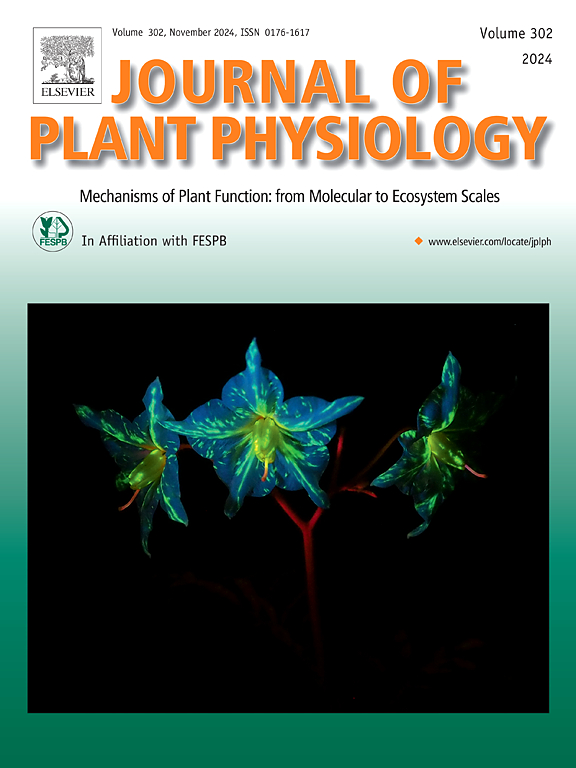Multilayered roles of COP1 in plant growth and stress responses
IF 4.1
3区 生物学
Q1 PLANT SCIENCES
引用次数: 0
Abstract
COP1 (CONSTITUTIVE PHOTOMORPHOGENIC 1) is a highly conserved eukaryotic protein that functions as a central repressor in plant photomorphogenesis. As an E3 ubiquitin ligase, COP1 regulates various physiological processes by ubiquitinating and degrading specific substrates. In recent years, the multifunctionality of COP1 has garnered increasing attention, as it not only is involved in light signal transduction but also plays a critical regulatory role in plant growth and development, stress response pathways, and hormone signaling networks. Moreover, COP1 also participates in the cross-regulation of multiple signaling pathways, including light signaling, stress response, and hormone signaling, further highlighting its core position in plant environment adaptation and growth and development. This review systematically elaborates on the evolutionary conservation, structural features, and multifunctionality of COP1, with a focus on summarizing its molecular regulatory networks in growth, development, and stress responses, while exploring its potential applications in crop genetic improvement.
COP1在植物生长和逆境响应中的多层次作用
COP1 (CONSTITUTIVE PHOTOMORPHOGENIC 1)是一种高度保守的真核蛋白,在植物光形态发生中起中心抑制作用。COP1作为E3泛素连接酶,通过泛素化和降解特定底物来调节各种生理过程。近年来,COP1的多功能性受到越来越多的关注,因为它不仅参与光信号转导,而且在植物生长发育、胁迫响应途径和激素信号网络中起着关键的调节作用。此外,COP1还参与光信号、胁迫响应、激素信号等多种信号通路的交叉调控,进一步凸显了其在植物环境适应和生长发育中的核心地位。本文系统阐述了COP1的进化保守性、结构特征和多功能性,重点综述了COP1在作物生长发育和胁迫反应中的分子调控网络,并探讨了其在作物遗传改良中的潜在应用。
本文章由计算机程序翻译,如有差异,请以英文原文为准。
求助全文
约1分钟内获得全文
求助全文
来源期刊

Journal of plant physiology
生物-植物科学
CiteScore
7.20
自引率
4.70%
发文量
196
审稿时长
32 days
期刊介绍:
The Journal of Plant Physiology is a broad-spectrum journal that welcomes high-quality submissions in all major areas of plant physiology, including plant biochemistry, functional biotechnology, computational and synthetic plant biology, growth and development, photosynthesis and respiration, transport and translocation, plant-microbe interactions, biotic and abiotic stress. Studies are welcome at all levels of integration ranging from molecules and cells to organisms and their environments and are expected to use state-of-the-art methodologies. Pure gene expression studies are not within the focus of our journal. To be considered for publication, papers must significantly contribute to the mechanistic understanding of physiological processes, and not be merely descriptive, or confirmatory of previous results. We encourage the submission of papers that explore the physiology of non-model as well as accepted model species and those that bridge basic and applied research. For instance, studies on agricultural plants that show new physiological mechanisms to improve agricultural efficiency are welcome. Studies performed under uncontrolled situations (e.g. field conditions) not providing mechanistic insight will not be considered for publication.
The Journal of Plant Physiology publishes several types of articles: Original Research Articles, Reviews, Perspectives Articles, and Short Communications. Reviews and Perspectives will be solicited by the Editors; unsolicited reviews are also welcome but only from authors with a strong track record in the field of the review. Original research papers comprise the majority of published contributions.
 求助内容:
求助内容: 应助结果提醒方式:
应助结果提醒方式:


